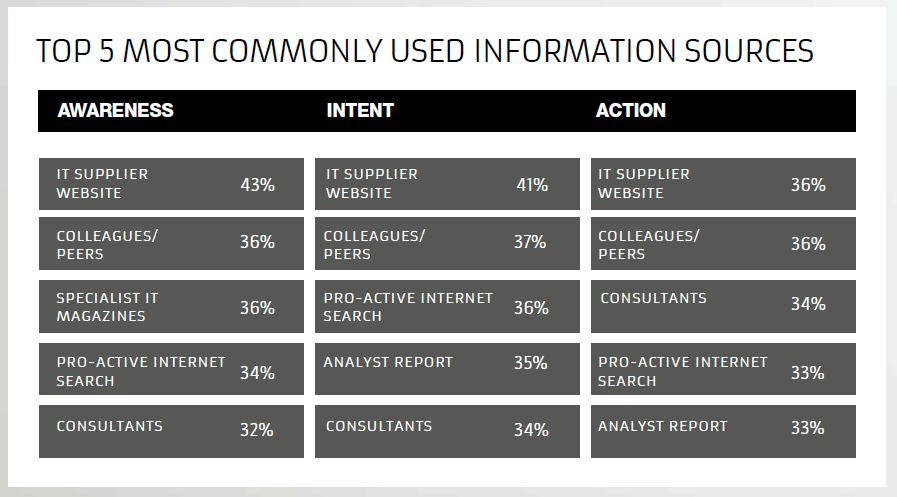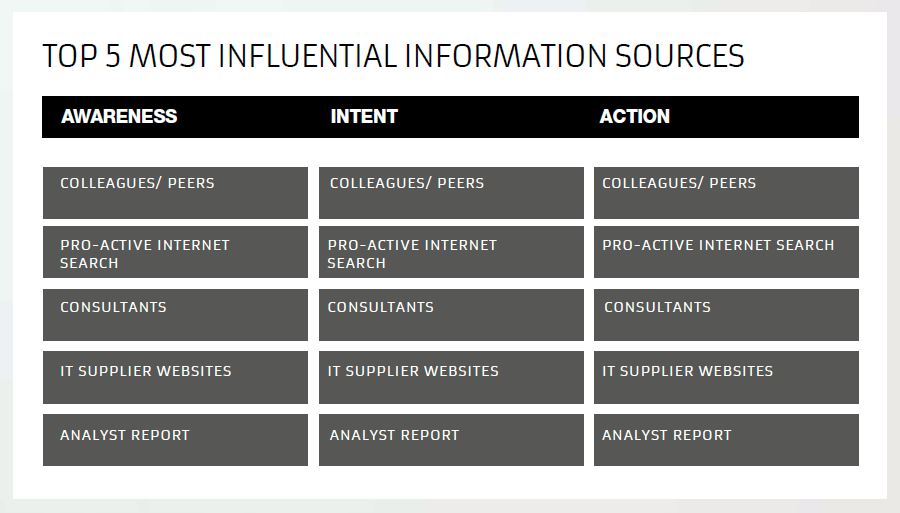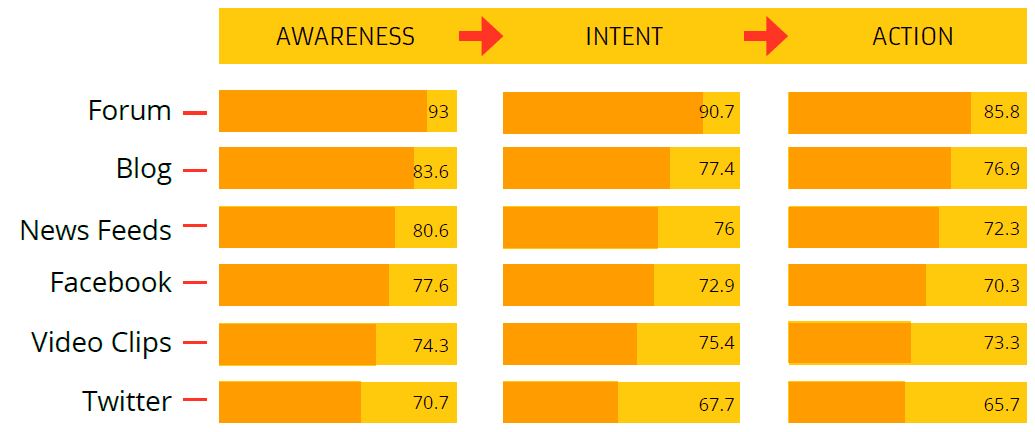Today’s media offers more options for getting noticed by business leaders, but it also means having to create more complex communication strategies to target them.
For example, research from integrated communications agency, Text100, shows the uphill struggle faced by technology companies as they seek to sell to an increasingly multifaceted and diverse audience.
The research focused on the various media that B2B buyers engage with through different stages of their buyer journey and the subsequent impact on marketers and communicators in this space.
According to the research, before deciding which technology solution to buy:
- 34 per cent of decision makers use a search engine to get more information on a product or brand
- 43 per cent look at information on the supplier’s website, making it the most used information source
- 27 per cent read online endorsements, reviews or recommendations
- 28 per cent cited e-mail newsletters as an information source
Supplier websites, despite being the most common source of information – with an average of 40 per cent of decision makers using them at all stages of their journey – are not deemed the most influential source. Colleagues and peers, blogs and forums, were all judged as being more important in making a decision.
Websites were viewed up to 60 per cent more frequently than social media channels and 50 per cent more viewed than blogs. However, when it comes to the most trusted sources of information, supplier websites came further down the list.
When approaching a variety of business challenges, over two thirds (68 per cent) of decision makers first reach out to people they know such as colleagues and peers and suppliers for advice, emphasising the notion of trust and the importance placed on existing relationships and recommendations.
Throughout all stages, respondents rated trusted advisors including colleagues and peers and professional experts as the most important sources of information, ahead of secondary sources, including supplier websites and analyst reports.
Forums trump Twitter
The study also reveals that over a quarter (27 per cent) of enterprise decision makers looking for a new technology solution will consult forums – such as Quora and LinkedIn – and blogs in order to inform purchasing decisions, whereas Twitter is viewed as the least important social channel, with only 15 per cent of respondents using it as a source of information.
Twitter becomes more significant as a platform for enterprise decision-makers to act as advocates. In fact, customers are 6 per cent more likely to share a positive experience via Twitter or other social channels than they are to share a negative experience.
Throughout the journey from awareness to advocacy, Twitter does play a role in influencing decisions (particularly from a position of peer recommendations), but forums and blogs are cited as more frequently used and more influential.
The multitude of channels influencing B2B buyers means that it is more important than ever for PR practitioners to adopt an integrated approach in their communications strategies. “B2B suppliers have a real opportunity to influence purchase decisions and drive a path to advocacy with buyers,” says Aedhmar Hynes, CEO of Text100. “They must aim to actively engage decision makers at each stage of their journey, with the information they need, at the time they need it. If they get that right, it doesn’t just mean securing a sale. It means gaining a powerful advocate for future sales too.”
Background
Click here for more information on the study.
The goal of the study was to get a better understanding of how the business decision-makers’ journey has changed as a result of fast-paced technological evolution; how they identify what is critical in a world of profuse information; where they go to get it; and at which stage of the decision-making process it is most influential.
The findings are based on online interviews conducted in late November 2013 with 1,902 respondents across eight locations: Canada, China, France, Germany, India, Spain, UK and USA. The participating companies had more than 50 employees. Participating individuals were drawn from a range of decision-making roles including (but not limited to): CEOs, CIOs, IT Directors, and Project Managers.
Written by Cecile Missildine, regional director EMEA at Text100
PR Masterclass: The Intersection of PR and GEO
Join PRmoment for a Masterclass featuring 10 of the industry’s foremost experts. You will walk away with a clear, actionable strategy for adapting your content to an AI-first search environment.
Taking place on Wednesday 25th February in London, both virtual and in person tickets are available.
If you enjoyed this article, sign up for free to our twice weekly editorial alert.
We have six email alerts in total - covering ESG, internal comms, PR jobs and events. Enter your email address below to find out more:












